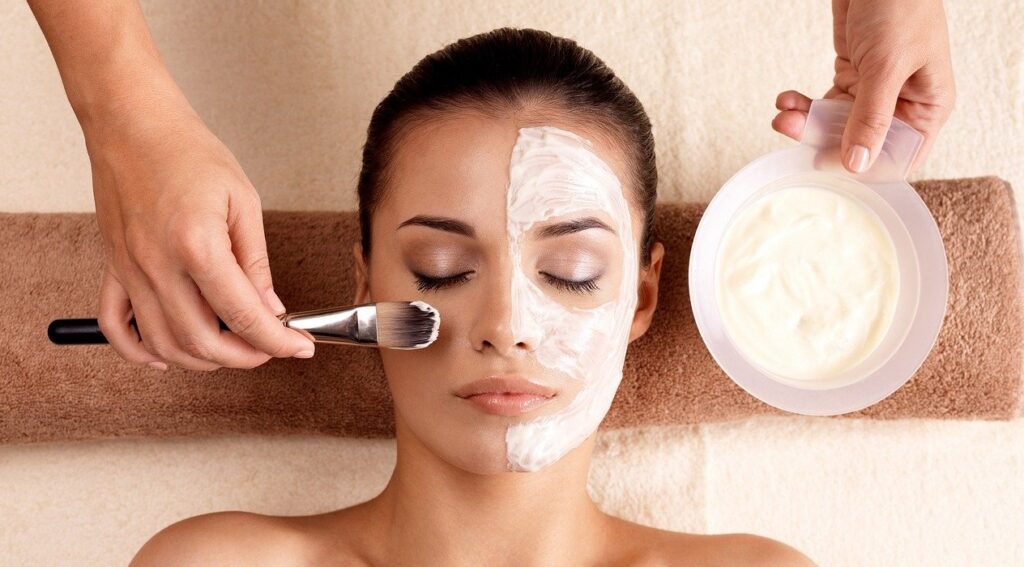Very Awesome Tips for Making Facemasks at Home
In the quest for healthier, glowing skin, many people are turning to homemade facemasks as a natural and effective solution. The beauty of making facemasks at home lies in the ability to customize ingredients according to your skin’s unique needs, ensuring that you’re using fresh, organic components without any hidden chemicals. This comprehensive guide delves into the essentials of making facemasks at home, offering a wealth of tips, techniques, and recipes to help you achieve your skincare goals.
1. Understanding Your Skin Type
Before diving into facemask recipes, it’s crucial to understand your skin type. This ensures that the ingredients you use address your specific concerns and provide the best results.
- Oily Skin: Characterized by excess sebum production, leading to a shiny appearance and potential acne. Look for ingredients that control oil and prevent breakouts.
- Dry Skin: Often feels tight and flaky due to a lack of moisture. Ingredients that hydrate and lock in moisture are beneficial.
- Combination Skin: Exhibits characteristics of both oily and dry skin. You’ll need ingredients that balance oil production and hydrate dry areas.
- Sensitive Skin: Prone to redness, irritation, or allergic reactions. Opt for gentle, soothing ingredients.
2. Choosing the Right Ingredients
The effectiveness of a facemask largely depends on the ingredients used. Here’s a breakdown of some fantastic natural ingredients and their benefits:
- Honey: Known for its antibacterial properties and ability to lock in moisture. Ideal for all skin types, particularly beneficial for dry and sensitive skin.
- Yogurt: Contains lactic acid which gently exfoliates and hydrates the skin. Great for brightening and soothing.
- Avocado: Rich in healthy fats and vitamins A, D, and E, making it perfect for moisturizing and nourishing dry skin.
- Oatmeal: Soothes and calms irritated skin, making it excellent for sensitive or inflamed skin.
- Lemon Juice: Brightens the skin and can help with acne due to its astringent properties. Use sparingly, as it can be irritating for sensitive skin.
- Green Tea: Packed with antioxidants and anti-inflammatory properties, it’s great for reducing redness and soothing irritated skin.
- Aloe Vera: Hydrates and calms the skin, perfect for soothing sunburns or irritations.
3. Mixing and Matching Ingredients
Combining different ingredients allows you to tailor facemasks to specific skin concerns. Here are some effective combinations:
- For Hydration: Combine avocado and honey. Avocado provides deep moisture while honey locks it in.
- For Brightening: Mix yogurt with a few drops of lemon juice. Yogurt exfoliates gently while lemon juice brightens the complexion.
- For Exfoliation: Use oatmeal mixed with yogurt or honey. Oatmeal exfoliates while yogurt or honey adds hydration.
4. Preparing and Applying Facemasks
4.1. Tools and Equipment
Using the right tools can enhance the facemask-making process:
- Mixing Bowl: Preferably non-metallic to prevent reactions with ingredients.
- Spatula: For mixing and applying the mask.
- Brush: For even application, especially for thicker masks.
- Washcloth: Soft, for removing the mask gently.
4.2. Application Tips
- Cleanse Your Face: Start with a clean face to ensure that the facemask can penetrate effectively.
- Even Layer: Apply the mask evenly to avoid uneven results and ensure full coverage.
- Avoid Sensitive Areas: Keep the mask away from your eyes and mouth to prevent irritation.
5. Homemade Facemask Recipes
5.1. Hydrating Avocado and Honey Mask
Ingredients:
- 1/2 ripe avocado
- 1 tablespoon honey
Instructions:
- Mash the avocado until smooth.
- Mix in the honey until well combined.
- Apply to your face and leave on for 15 minutes.
- Rinse with warm water.
Benefits: Deeply hydrates and nourishes the skin, making it ideal for dry or mature skin.
5.2. Brightening Yogurt and Lemon Mask
Ingredients:
- 2 tablespoons plain yogurt
- 1 teaspoon lemon juice
Instructions:
- Combine yogurt and lemon juice in a bowl.
- Apply to your face and leave on for 10 minutes.
- Rinse with lukewarm water.
Benefits: Brightens the complexion and exfoliates gently, suitable for dull or uneven skin tones.
5.3. Soothing Oatmeal and Honey Mask
Ingredients:
- 1/2 cup cooked oatmeal (cooled)
- 1 tablespoon honey
Instructions:
- Mix cooked oatmeal with honey.
- Apply to your face and leave on for 10-15 minutes.
- Rinse with warm water.
Benefits: Calms and soothes irritated skin, perfect for sensitive or inflamed skin.
5.4. Detoxifying Clay and Green Tea Mask
Ingredients:
- 1 tablespoon bentonite clay
- 1 tablespoon brewed green tea (cooled)
- 1 teaspoon honey
Instructions:
- Mix all ingredients into a smooth paste.
- Apply to your face and leave on for 10 minutes.
- Rinse with warm water.
Benefits: Draws out impurities and soothes the skin, ideal for oily and acne-prone skin.
5.5. Refreshing Aloe Vera and Cucumber Mask
Ingredients:
- 1/2 cucumber
- 2 tablespoons aloe vera gel
Instructions:
- Blend the cucumber until smooth.
- Mix with aloe vera gel.
- Apply to your face and leave on for 10 minutes.
- Rinse with cool water.
Benefits: Hydrates and refreshes the skin, excellent for all skin types, especially after sun exposure.
6. Tips for Maximizing Facemask Benefits
6.1. Patch Test
Always perform a patch test before applying a new facemask to your entire face. This helps prevent potential allergic reactions or irritation.
6.2. Frequency
Using facemasks once or twice a week is generally sufficient. Overuse can irritate the skin and disrupt its natural balance.
6.3. Storage
Store any leftover facemask in an airtight container in the refrigerator. Most homemade masks are best used within a week.
6.4. Hydration
After removing the facemask, apply a moisturizer to lock in hydration. This helps to keep your skin soft and supple.
7. Addressing Common Concerns
7.1. Sensitive Skin Reactions
If you have sensitive skin, be cautious with ingredients like lemon juice or essential oils. Opt for soothing ingredients like oatmeal or aloe vera.
7.2. Acne-Prone Skin
For acne-prone skin, focus on ingredients with antibacterial properties such as honey or tea tree oil. Avoid heavy oils and comedogenic ingredients.
7.3. Aging Skin
Incorporate ingredients rich in antioxidants and vitamins, such as avocado or honey, to help combat signs of aging and promote a youthful appearance.
8. Experiment and Personalize
The beauty of homemade facemasks is the ability to experiment and personalize based on your skin’s needs. Feel free to adjust ingredient quantities or combine different elements to create a mask that suits your preferences.
8.1. Essential Oils
Consider adding essential oils like lavender for relaxation or tea tree oil for acne treatment. Always dilute essential oils with a carrier ingredient like honey or yogurt.
8.2. Herbal Additions
Incorporate herbal ingredients such as chamomile or rosemary tea for additional skin benefits. Brew and cool the tea before adding it to your facemask.
9. Incorporating Facemasks into Your Skincare Routine
9.1. Consistency
Regular use of facemasks can enhance skin health and appearance. Consistency is key, but it’s important not to overdo it. Once or twice a week is usually adequate.
9.2. Complementary Products
Combine facemasks with other skincare products such as cleansers, toners, and moisturizers to create a comprehensive skincare routine.
9.3. Lifestyle Factors
Maintain a healthy lifestyle to support your skincare efforts. Stay hydrated, eat a balanced diet, and get adequate sleep to complement the benefits of your facemasks.
10. The Future of Homemade Skincare
The trend of DIY skincare continues to grow as people seek natural and personalized solutions. Innovations in skincare science and the availability of new, natural ingredients offer exciting possibilities for creating effective and enjoyable homemade facemasks.
10.1. Sustainable Ingredients
As sustainability becomes a priority, consider using eco-friendly ingredients and packaging for your facemask recipes. This aligns with the growing movement towards environmentally conscious beauty practices.
10.2. Technology Integration
Future advancements may include technology that helps customize facemask ingredients based on real-time skin analysis. Stay informed about emerging trends to enhance your skincare routine.
Conclusion
Making facemasks at home offers a wonderful opportunity to tailor skincare treatments to your individual needs using natural, effective ingredients. By understanding your skin type, choosing the right ingredients, and following proper application techniques, you can create facemasks that rejuvenate and nourish your skin.



